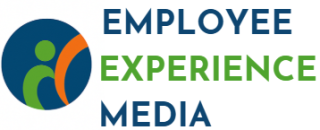
Understanding Excellence in the Workplace
The Essence of Workplace Standards
Striving for excellence in any organization starts with establishing clear and high standards within the workplace. It involves setting robust goals aligned with the company culture and promise, serving as a foundation for both leaders and employees to understand what is expected in their roles. A commitment to continuous improvement and innovation is key to achieving excellence. This not only boosts performance but also increases the sense of accountability among team members. Creating a culture of excellence requires the participation of all employees. Consistent feedback loops and open communication channels play critical roles in fostering a culture of excellence. By regularly reviewing processes and engaging everyone in the pursuit of company goals, organizations can ensure that their entire team is working towards a shared vision. Building a corporate culture centered around high performance is not the responsibility of leadership alone. Encouraging continuous learning and development initiatives is crucial. This approach empowers employees to pursue excellence, resulting in increased motivation and engagement within the organization. For more insights into understanding and developing this aspect, consider exploring the dynamics of organizational culture. This comprehensive view helps in honing the organizational culture inventory to benefit both the workforce and the organization's goals. Ultimately, the essence of workplace standards lies in the clear definition and consistent reinforcement of these standards, fostering a supportive environment where employees and leaders alike are committed to pursuing excellence.Leadership's Role in Fostering Excellence
Leadership Strategies to Drive Excellence
In the pursuit of workplace excellence, leadership plays a pivotal role in setting the pace and direction for the company's goals. Effective leaders are those who not only set high standards but actively engage with their team members, encouraging a culture of continuous improvement and innovation. By fostering an environment where excellence is the norm, leaders enable employees to thrive and achieve their full potential.
Among the core responsibilities of leadership is cultivating a strong company culture that prioritizes open communication and employee feedback. Regularly reviewing performance and providing constructive feedback helps employees feel valued and aids in aligning their efforts with the organization’s objectives. This not only boosts morale but also improves overall organizational performance.
Furthermore, leaders committed to excellence will invest in continuous learning and development initiatives. Encouraging employees to pursue skill-building opportunities and innovate ensures that the organization remains competitive in a rapidly changing business landscape. Leaders also lead by example, demonstrating a consistently strong work ethic and a dedication to maintaining high standards.
Achieving excellence in the workplace requires a supportive and committed leadership team that prioritizes a culture of excellence. For an in-depth look at how leadership intersects with community initiatives, consider exploring the role of a volunteer coordinator as it provides unique insights into fostering community and organizational identity.
Employee Engagement and Motivation
Motivating Employees and Sparking Engagement
One of the key ingredients in cultivating excellence within the workplace is the active engagement and motivation of employees. It's widely recognized that engaged employees are more productive, leading to higher performance and achieving excellence on both individual and organizational levels.
To foster a culture of engagement, companies must prioritize open communication. This includes involving team members in decision-making processes and enabling them to provide regular feedback. Employees should feel that their voices are heard and valued within the organization.
Leaders play a crucial role in this process. They need to set an inspiring vision that aligns with the company's high standards and ensures that everyone understands how their individual goals contribute to the overall pursuit of excellence.
- Continuous Learning and Development: Implementing ongoing training initiatives encourages continuous improvement among employees. A strong culture of learning can enhance employee experience and promote innovation.
- Recognition Programs: Celebrating achievements and recognizing high performance fosters an environment where striving for excellence becomes a shared goal.
- Empowering Teams: Providing autonomy to teams to problem-solve and make decisions can lead to a more committed workforce, enhancing the culture of excellence workplace.
By focusing on these strategies, organizations can develop a corporate culture where engagement and motivation naturally lead to workplace excellence. This not only benefits the company but also creates a more fulfilling work experience for employees, fostering long-term commitment to their roles and the organization.
Training and Development Initiatives
Fostering a Culture of Learning and Development
Encouraging continuous learning and development within an organization is essential for workplace excellence. As companies strive for high standards, it's crucial to support employees in enhancing their skills, which directly contributes to achieving the organization's goals. Emphasizing training and development initiatives not only boosts individual performance but also enhances the collective output of the team.- Commitment to Continuous Improvement: Organizations dedicated to excellence continuously invest in training programs that focus on skill development, problem solving, and innovation. This creates a culture of excellence where team members are equipped to meet and exceed workplace standards.
- Leadership's Role: Leaders play a pivotal role in fostering a learning-oriented culture by encouraging open communication and supporting employees in their pursuit of excellence. By regularly reviewing performance and providing feedback, leaders can identify areas for growth and tailor development initiatives to meet specific needs.
- Customization of Training Programs: Tailoring training sessions according to the unique needs of the employees ensures that everyone has the opportunity to contribute meaningfully to the organization's success. Providing a variety of learning options, such as workshops, online courses, and mentorship programs, accommodates different learning styles and preferences.
- Integration of Feedback and Innovation: A healthy feedback culture is vital in identifying skill gaps and potential areas for improvement. Encouraging employees to suggest innovative ideas for training content can lead to enhanced engagement and a sense of ownership in the learning journey.
Creating a Culture of Feedback and Recognition
Nurturing a Feedback-Driven Environment
Creating a culture of feedback and recognition is pivotal in the pursuit of workplace excellence. Organizations aiming for high standards understand that open communication and consistent feedback loops drive continuous improvement. Here are some strategies for fostering a feedback-rich environment:- Encourage Open Dialogue: Leaders should promote open communication, allowing team members to voice ideas and concerns. This creates a culture where feedback is welcomed, not feared.
- Regular Performance Reviews: Regularly reviewing employee performance against company goals helps maintain high standards. This practice ensures employees are aligned with the organization's vision of excellence.
- Leverage Peer Recognition: Encouraging peer-to-peer recognition fosters a sense of camaraderie and mutual respect among team members. Recognizing efforts often leads to higher employee engagement and enhanced performance.
- Implement Continuous Learning Opportunities: A commitment to continuous learning encourages innovation and problem-solving, key components in achieving excellence in the workplace. Training and development initiatives can tie into feedback by identifying areas for growth.
- Celebrate Achievements: Recognizing when employees or teams exceed expectations reinforces a culture of excellence. Celebrations of achievement can be simple yet effective ways to acknowledge hard work and motivate teams.













